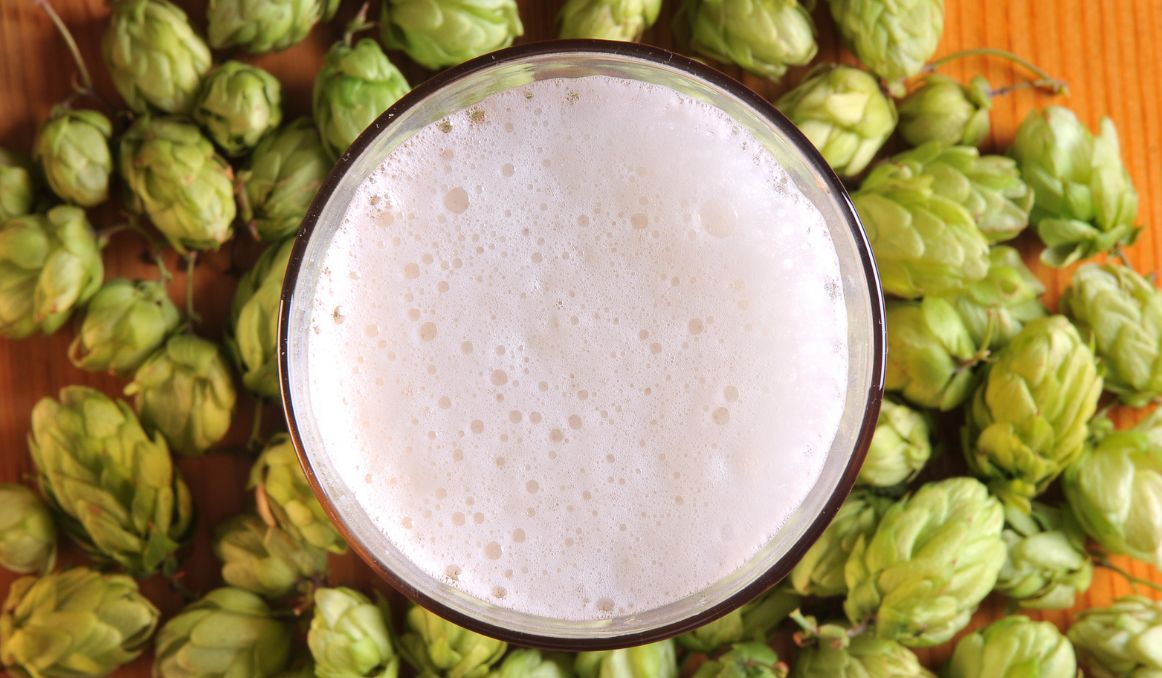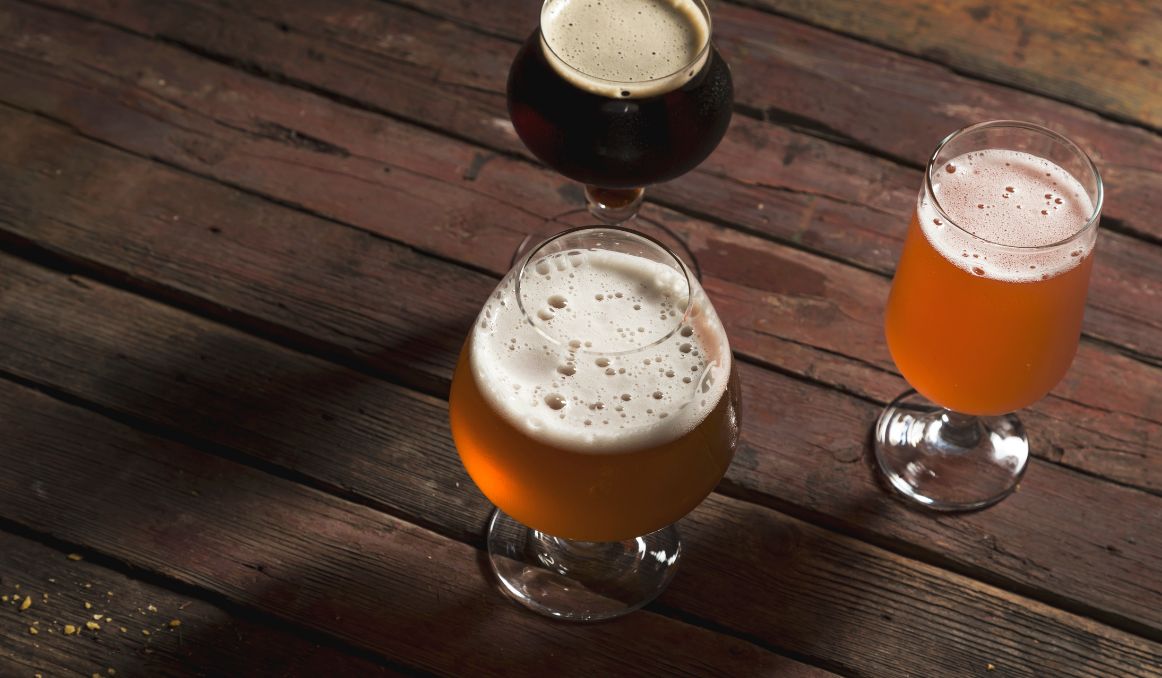What Does IPA Beer Mean: Your 101 Guide
As you first venture into the beer world, it can feel a bit overwhelming. Craft breweries will hand you menus with everything from lagers to reds to stouts. What is an amber, after all? And how do you choose? To be sure, the menu also usually includes some sort of description for the beer, but those descriptions typically include flavors and aromas and very rarely detail of the actual brewing process and how the process differs among various types of beer.
One increasingly popular beer that remains a mystery to many is the illustrious IPA. Many people, even among fans, do not even know what IPA stands for, much less what it is or how it is made. What does IPA beer mean, anyway? And what is its role in the world of beer?
The World of Beer
It must first be acknowledged that “beer” has evolved over time, taking on various meanings and forms for the last, perhaps, 7,000 years.
It is almost certain that humans have found ways to created alcoholic beverages and halucinogens from the wide variety of plants they have had access to, but beer has a few specific requirements to truly own its name.
Beer Requirements
Beer must come from a grain, and that grain must be cracked or ground in some way to release the sugars in the grain for fermenting. The grain must then be boiled and steeped in a large container. The fermentation process demands yeast, wild or cultured, in order to convert the sugar to alcohol and produce what we think of as beer.
The hops typically added to beer today were not always a requirement, so we will leave that for now.
In order to meet all those requirements, humans must have had access to grain cracking, fire, and kettles to boil. Thus, we can say with certainty that beer as we think of it cannot have existed prior to about 5,000 BC, so 7,000 years ago.
We have some historical references to beer dating back to Mesopotamia and Egypt around 3300 BC and some earlier accounts of grain fermented beverages in the Alps around the fourth millennium BC.
The Evolution of Beer

It began very simply. Grain was cracked, boiled, and steeped, yeast was added, and beer was drunk. The Greeks and Romans partook. The church got involved and beer became ritualistic. Saint Brigid of Kildare, in Ireland, was even purported to have worked wonders with beer. Many holy men in the first millennium AD are in fact heralded as beer miracle workers.
Around 822 AD, hops were finally added to beer. Hops provide beer with bittering, flavoring, and stability. They make beer taste more fruity, flavorful, and citrusy.
Hops are flowers that resemble cones and serve the additional purpose of acting as an antibacterial agent over less desirable microorganisms.
Then, around 1200 AD, beer began to become commercialized, wherein brewers could make and sell beer for profit.
The History of IPA
IPA stands for India Pale Ale, and its origin derives precisely as its name suggests, in India. British sailors traveling from India back to Britain brought beer along on their journey, of course, and to preserve the beverage for the trip, they added hops to the beer. As the trips became more frequent, the “hopping” became more extensive. Thus, the pale ale prepared for travel to and from India was born – India Pale Ale.
IPAs are extra hoppy by nature. It is what gives them their distinct flavor referenced often as “bitter.” If you have never tried an IPA, know that it is an acquired taste.
Over the years, India Pale Ale waxed and waned in public favor, until modern times, where it is now all the rage, with craft brewers outdoing themselves to make a name for themselves in the IPA world.
Bitterness
The bitterness a drinker tastes in IPA comes from the excessive hops, and today we often reference the IBU scale. Some craft breweries will even include the IBU on their beer menu. IBU stands for International Bitterness Units, and it allows you to gauge the level of a beer’s bitterness. For example, a typical market lager (a light beer) will have anywhere from 5 to 10 IBUs, while an American IPA can run from 55 to 70 IBUs. A double India Pale Ale can go even higher, all the way up to 100 IBUs. That’s pretty bitter.
There are, however, many master brewers today arguing, and experimenting, that India Pale Ales do not have to be so bitter. That they can, in fact, drink like a lager. IPAs also typically have more malted barley to balance out the higher hop content, which results in higher alcohol volume.
Types of IPAs
Session
An IPA that has fewer hops, less malted barley, and therefore less alcohol. These are typically the easiest IPAs to drink.
Double/Imperial
Both double and imperial IPAs have a higher hop concentration, which means more bitterness, and more alcohol.
Dry Hopped
Dry hopping is the process of adding the hops during the fermentation process, which allows for a strong, usually floral or fruity, aroma. You get a stronger smell without more bitterness.
Single Hopped
Asingle hopped IPA uses only one hop plant.
Fresh Hopped
Like farm to table, only for beer. Fresh hopped means the hop goes straight from the vine to the fermentation tank. It allows for a fresher flavor profile.
There are also a variety of locations an IPA can come from, ranging from British to West Coast, and names for specific IPAs, like Fruited and Sour, all of which depend upon the additives in the beer along with the type of hops included in the brew.
Lately, the hazy IPA has made a name for itself, wherein the brewer will allow wild yeast to be introduced to the fermentation tank, which creates a cloudy beer that IPA fans rave about.
Experiment with IPA Brewing
As a brewer, it can be fun to explore the world of IPAs. There is so much to work with. Have fun experimenting, and you may find yourself tripping upon an entirely new IPA!
Passionate about the beer and/or wine making process? So are we! If you’re interested in finding out how you can use our technology to control fermentation and monitor your yeast, save work hours and improve the cost-efficiency of your business, drop us a line at [email protected] or check out our product pages:
- Oculyze BB 2.0 (Better Brewing) Yeast Cell Counter App + Hardware
- Oculyze FW (Fermentation Wine) Yeast Cell Counter App + Hardware
Also, you can now get access to a fully functional demo account to test our Web App. Completely free of charge and with no commitment to purchase.
Sources:



